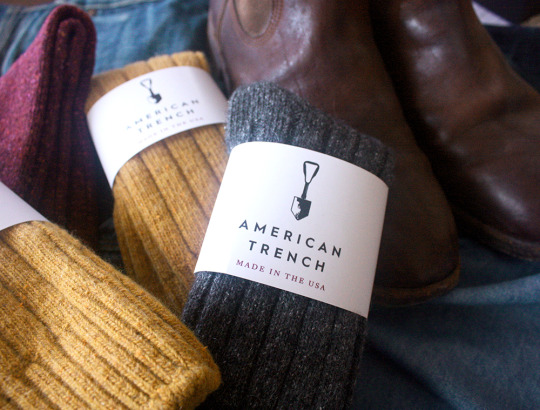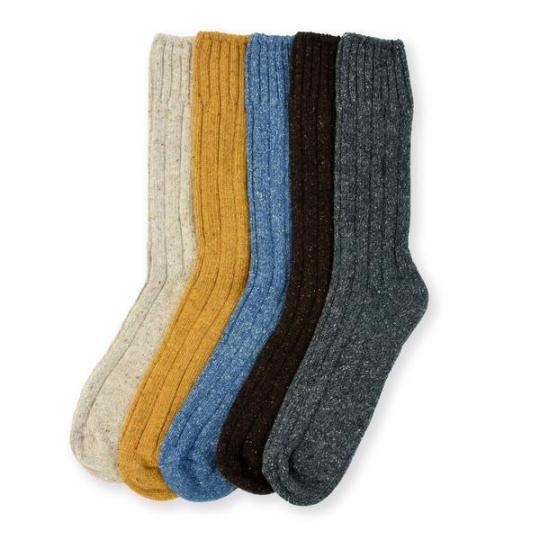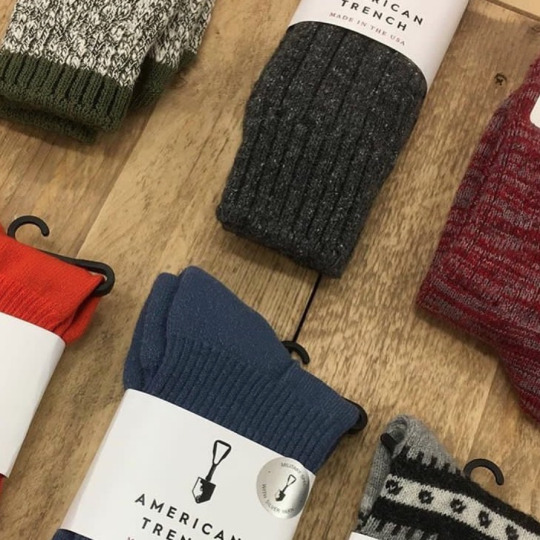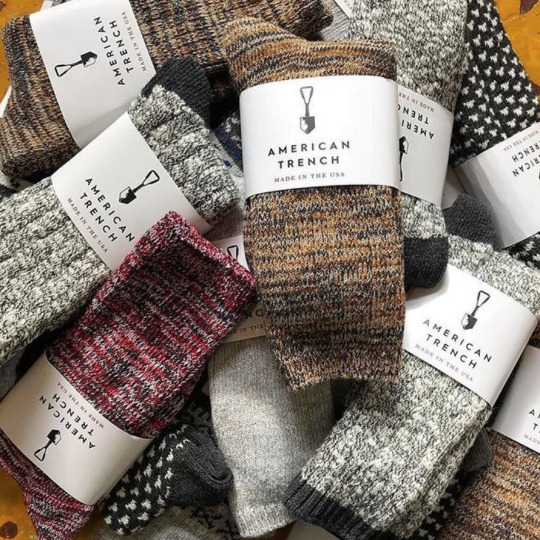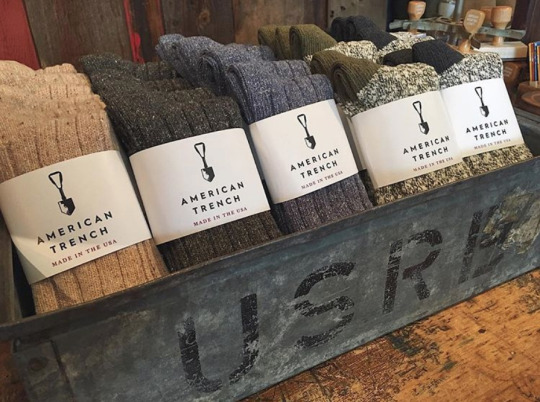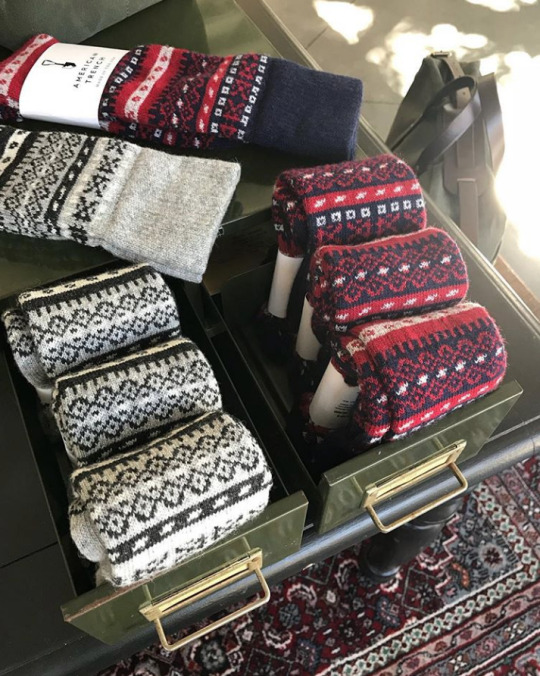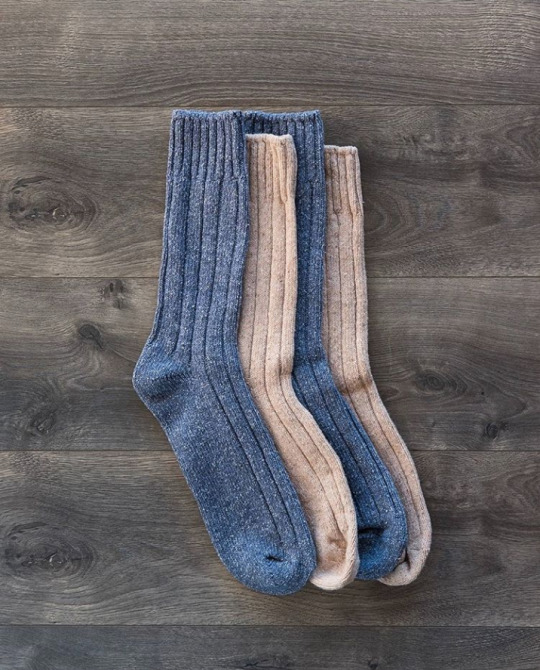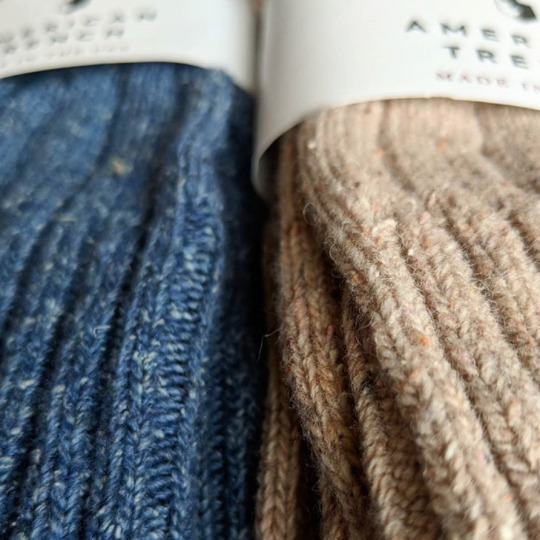
Is it possible to be this excited about socks? Ten years ago, garishly designed “fun socks” were a mark of bad taste – like the hosiery equivalent of novelty ties. For years, I’ve stuck to solid-colored navy dress socks and simple, gray, athletic cotton-socks out of fear of seeming too whimsical. Too many suits in the late-aughts were ruined by screamy colors peeking out from beneath the cuffs; too many casual outfits accessorized with something that said “bacon” or “beer.”
In the last couple of years, however, I’ve opened up to the idea that socks can be fun, but still in good taste – socks don’t have to be so pedestrian. I really like Anonymous Ism’s socks, for example, which can be cheerful without being contrived. Wigwam has terrifically slubby camp socks. Chup has some of the best Fair Isles. Last month, I also picked up a couple of pairs of American Trench’s wool-silk boot socks, which are subtly flecked like Donegal tweed. And they may just be my favorites of all.
American Trench is one of the many young companies today promoting American manufacturing. They started as a Kickstarter campaign for contemporary styled, single-breasted raincoats. “We didn’t want to offer early supporters branded t-shirts, so we made a small line of socks,” says Jacob Hurwitz, the company’s founder and designer. “Since our launch, that part of the business has really grown, especially on the wholesale side. About 80% of our sales volume now is made up of accessories, such as socks, hats, gloves, and scarves.”
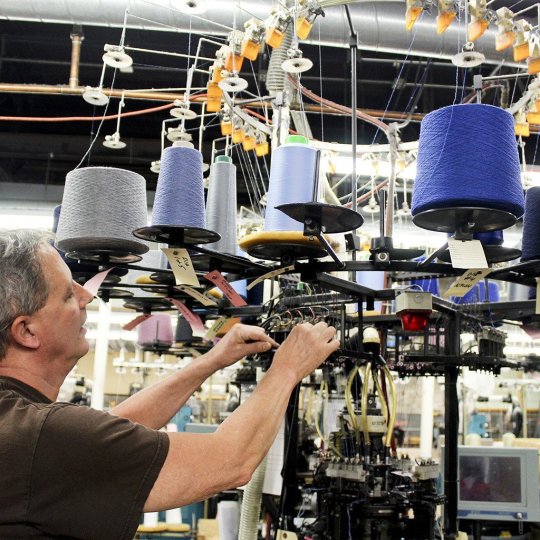
There’s an old saying among clients of bespoke tailors about how you should never stray too far from the house style. The same is true of ready-to-wear manufacturing. Italian factories, such as those behind Marcoliani and Bresciani, have made a name for themselves by producing some of the best, finely knitted dress socks in the world – merino wool, cashmere, cotton, linen, or a mix thereof. And while there are still US manufacturers for top-end dress socks, most specialize in the sort of thicker constructions suited for more causal styles.
American Trench relies on two US factories for their socks. The one behind this model is based in Reading, Pennsylvania, and while the plant got their start in the mid-1970s making sweatbands, they’ve done hosiery since the early ‘80s. One of the advantages of producing in the US? Along with having access to high-quality production, Jacob makes an interesting point about cost:
People don’t think about it much, but retail prices are partly about distribution. When you use an overseas factory, you have to import your items back into the US, which drives up your cost in freight, duties, and agents. And for socks, that can be a significant percentage of the final price. The difference between $225 and $275 for outerwear isn’t that big of a deal in the consumer’s mind, but it can be a big deal to compare $20 and $30 for socks. Consumers get pissy about that extra $10. So, if you’re trying to offer socks at a certain price, keeping the production at home means you can invest your savings into something else – say, using noble yarns. Japanese socks here cost $30, but they’re made from cotton. Our socks also retail for $30, but they’re made from premium fibers such superfine merino, wool-silk blends, mercerized cotton, baby camel hair, etc. For hosiery, there’s a distinct home-field advantage.
Which brings me to why I’m posting about these at all. After trying two pairs of American Trench’s wool-silk socks, I asked Jacob if he was planning to continue this model. It turns out, these socks are made from deadstock yarns originally spun by an Italian factory that has since gone out of business. American Trench’s manufacturer in Reading bought the entire load of deadstock, but once the yarns are gone, they’re gone. Jacob will introduce this same tweed-style model in some new colors later this year – gold, red, burgundy, denim, charcoal, and black heather – but he only has enough material for about fifty more pairs of this burnt ochre (and I think that’s the best color).
So, last week, I picked up a few more pairs, as the material is simply too good. The socks are exceptionally soft, sturdily made, and considerably more comfortable than any cotton socks I’ve ever worn. They stretch out a little after a day’s wear, but they stay up on the calf and can be shrunk back into shape through the wash (Jacob recommends machine drying). Not cheap at $30 per pair, but you can get two sets for $45. I’ve been wearing mine the 3sixteen SL-100x jeans and Kapital side-zip boots pictured above.
(photos via American Trench, Wooden Sleepers, Spend Indie, Withered Fig, Good People, Arena Menswear, and J. Stark)
